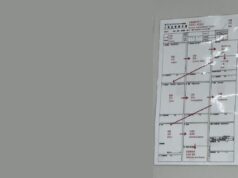“Just in Time” so often gets a bad rap. People blame “JIT” for all sorts of problems, when it's often a problem with how JIT is implemented instead of being a problem with the core principle of Lean in and of itself.
At a Lean conference, a group from a company was talking through an A3 problem solving example. The problem statement was that customers were not getting orders in the promised timeframes.
As they went through one of their “5 Whys” analyses, one of the “root causes” was listed simply as “JIT.”
Helping to facilitate, I probed a bit…. that didn't sound like a root cause yet. Why was JIT a problem?
They said that the upper managers had gotten hold of the JIT concept and they, predictably enough, slashed inventory. They complained that managers were suboptimizing inventory levels (trying to keep them low) while ignoring the need to make customer shipments. The production process was dependent on a circuit board, shipped from a long distance away, that had highly variable quality yields (due to the specialized nature of the product).
This is a common mistake, unfortunately, when first learning about and implementing Lean. We hear about one aspect of Lean and someone runs with it, without really thinking it through or understanding the whole Lean concept.
A lesson I learned early on from a Japanese Lean sensei:
“First, keep the line running. Second, keep inventory low.”
Instead of low inventory for low inventory's sake, the point is to keep inventory as low as possible while meeting the first goal — maybe not keeping the line running precisely 100% of the time (since that often requires a TON of inventory), but not allowing the line to be down for hours each day.
So, one of the root causes for “JIT” being a failure mode was really “lack of deep Lean understanding.”
Do you have examples of a situation where inventory was intentionally cut so low that it really hurt the overall business or prevented you from meeting customer needs?
Subscribe via RSS | Lean Blog Main Page | Podcast | Twitter @MarkGraban
Please scroll down (or click) to post a comment. Connect with me on LinkedIn.
Let’s work together to build a culture of continuous improvement and psychological safety. If you're a leader looking to create lasting change—not just projects—I help organizations:
- Engage people at all levels in sustainable improvement
- Shift from fear of mistakes to learning from them
- Apply Lean thinking in practical, people-centered ways
Interested in coaching or a keynote talk? Let’s start a conversation.










Looking at Factory Physics or Little’s Law (or common sense)…. zero WIP = zero production.
Zero production = zero customers
Then who cares how little inventory you have?
That said, that whole line of thought shouldn’t be an excuse to “throw inventory at the problem.” That’s another failure mode to avoid at the other end of spectrum.
Good thought starter.
Reducing maintenance material inventory (while the machines are new!) in order to save money is probably the worst thing you can do!
Getting eventually high cost quick "last seconde" delivery shipment for needed maintenance parts is counter productive.
– Morale of workers due to hazzle around the quick "last second" delivery shipment sinks
– standing of the lean improvement program (through lowering inventory) sinks dramatically
– MURA induced by "lean" action (is that what we want by Lean?)
– eventually forces to outsource the process only to press the service provider more on the goals oneself had not achieved in the past
>>> have a clear sight on what you really need NOW and in the FUTURE! Dynamic and sytemic view of what is going on in the organization is essential.
…just my two cents on Mark's initial question.
Cheers,
Ralf (http://www.leanthinkers.blogspot.com)
“The production process was dependent on a circuit board, shipped from a long distance away…”
So, did this group completely ignore the shipping time as part of the problem?? Was there a another manufacturer that would be able to deliver faster at the same price? I’m just curious about that particular issue.
It sounds like that may have been part of it, not fully considering the shipping time/distance. But I was part of the discussion as an outsider, so I can’t lend too much more detail.
[…] 2008: https://www.leanblog.org/2008/09/jit-as-cause-of-delayed-shipments/ […]